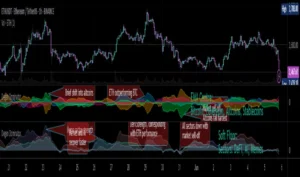Introduction: A Market Defined by Its Players
Bitcoin’s price doesn’t just move—it surges, retreats, and pivots with a rhythm set by its most influential participants: whales and retail investors. Behind every price rally and correction, there are trading decisions—often colossal in scale—that reflect changing sentiment, global economics, or long-term conviction.
But who’s really buying Bitcoin in today’s market? Is it institutions with deep pockets, nimble retail investors, or long-term HODLers preparing for the next bull run? This article breaks down the current landscape of BTC accumulation, the strategic behavior of whales, and the pulse of retail interest.
Whale Watching: The Quiet Titans of Crypto
Whales, defined as individuals or entities holding 1,000 BTC or more, are arguably the most influential players in the Bitcoin market. Their moves can impact price trends significantly, especially when made on-chain and tracked by analytics platforms.
Recent Whale Activity
According to on-chain data from platforms like Santiment and Glassnode, the past few months have seen a notable uptick in whale accumulation. Wallets with holdings between 1,000 and 10,000 BTC have been steadily growing since Q2 2025, suggesting that big-money players are positioning themselves ahead of a potential breakout.
Whales often buy in quiet periods—accumulating during dips or sideways movement. Unlike retail traders, who may react to news, whales act strategically, often using OTC (over-the-counter) desks to avoid slippage and minimize attention.
Institutions and ETFs in the Mix
The growing popularity of Bitcoin ETFs in the U.S., Europe, and Asia has opened new doors for institutional whale entry. While not all institutional holders have direct BTC wallets, many are influencing price via indirect exposure, especially with products like the BlackRock and Fidelity ETFs gaining substantial inflows.
Retail Investors: The Herd Mentality or New Power?
Retail investors, once the dominant force in crypto, are now seen as both trend followers and catalysts. While they may not control billions, their collective actions—especially on platforms like Coinbase, Binance, and Robinhood—create the short-term volatility Bitcoin is famous for.
Surge in Onboarding & Wallet Creation
Post-halving cycles typically see increased retail participation. In 2025, Bitcoin’s April halving event triggered a noticeable rise in new wallet creation, with over 500,000 new BTC addresses activated in a single month—many with small holdings (0.01 to 0.1 BTC). This signals a fresh wave of retail entry, likely driven by growing media attention and improving accessibility via payment apps like PayPal and Cash App.
The Social Media Effect
Platforms like Reddit, X (formerly Twitter), and TikTok continue to shape retail behavior. The #Bitcoin tag has surged on TikTok, particularly in Southeast Asia, where platforms are becoming a launchpad for financial literacy and FOMO alike. Influencers and short-form explainers are swaying decision-making for millions who are newer to crypto.
Asia’s Rising Role: Spotlight on Vietnam
In countries like Vietnam, India, and the Philippines, retail engagement is exploding. Vietnam, in particular, ranks among the top nations for crypto adoption per capita. Many Vietnamese investors are turning to Bitcoin as both a hedge against inflation and a gateway to global finance.
Local crypto exchanges and peer-to-peer platforms report increasing volumes—particularly small, consistent purchases under $500. This suggests the rise of retail DCA (dollar-cost averaging) strategies, even in emerging markets.
What the Data Tells Us
Let’s break down some of the key metrics defining current Bitcoin buying behavior:
- Exchange Reserves: Bitcoin balances on exchanges are declining, indicating that more BTC is moving into cold storage—a bullish sign often associated with long-term holders.
- Address Distribution: Addresses holding between 10-100 BTC have also grown, showing that mid-sized investors are on the rise—possibly early-stage whales or small institutions.
- Derivatives Open Interest: While whale buying remains strong in the spot market, retail is active in the futures and options markets, trying to capitalize on short-term movements.
Contrasting Motives: Whales vs. Retail
| Motive | Whales | Retail Investors |
|---|---|---|
| Strategy | Long-term accumulation | FOMO-driven, speculative |
| Tools | OTC desks, algorithmic trades | Exchanges, mobile apps |
| Behavior | Buy dips quietly | Buy rallies loudly |
| Risk Tolerance | Higher capital, lower liquidity need | Smaller capital, higher reactivity |
This contrast helps explain much of Bitcoin’s price movement. Whales set the underlying tone, while retail often amplifies trends.
The Bigger Picture: Is This the Start of a Supply Squeeze?
Bitcoin is a finite asset—only 21 million will ever exist. With whales increasing their holdings and retail demand rising, analysts warn of a potential supply squeeze. Combine this with ETF-driven demand and decreasing miner rewards post-halving, and the conditions for a major bull cycle may be forming.
Final Thoughts: Keep Your Eyes on the Chain
The question isn’t just “who’s buying Bitcoin?”—it’s why they’re buying now. Whales may see undervaluation. Institutions are chasing performance and portfolio diversification. Retail is chasing opportunity and access.
Understanding these behaviors helps not just in price prediction, but in grasping where Bitcoin fits into the broader economic landscape.
As the crypto world watches the next moves from big players and small investors alike, one thing is clear: Bitcoin’s story is far from over—and its next chapter may be written by both whales and the crowd.
Stay updated with EthereumVietnamNews.com for real-time insights into Bitcoin, Ethereum, and the global crypto ecosystem.









